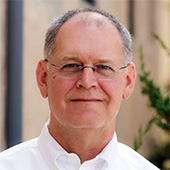Submitted by Wendell Potter on
 If opponents of health care reform could view the grant money in the Affordable Care Act as an investment in our children rather than wasteful spending, I believe at least some of them would eventually accept that we're better off with the law than without it.
If opponents of health care reform could view the grant money in the Affordable Care Act as an investment in our children rather than wasteful spending, I believe at least some of them would eventually accept that we're better off with the law than without it.
I'd be especially confident if they took the time to visit some of the community facilities that will be able to meet the health care needs of thousands more Americans as a result of those grants.
Earlier this month, the Obama administration announced awards of $95 million to 278 school-based health center programs across the country. The grants -- the first of $200 million worth of awards between now and 2013 -- will help clinics expand and provide more medical services at schools nationwide.
According to the U.S. Departments of Education and Health and Human Services, the school-based programs receiving the first grants currently serve nearly 800,000 patients. The grant money will enable them to increase their capacity by more than 50 percent, serving an additional 440,000 patients.
One of the recipients is the Family Health Centers of San Diego, which by itself last year served more than 161,000 patients, many of them children, through 600,000 visits at 30 locations and three mobile medical clinics. They will receive $500,000, the maximum award, to, among other things, establish a permanent clinic at Rice Elementary School in Chula Vista, a community with many uninsured families and a high unemployment rate.
Family Health Centers will also use the money to help transition to electronic health records and to replace aging equipment and update technology at one of its facilities at another school, Sherman Elementary.
In announcing the first recipients of this federal money, Secretary of Education Arne Duncan said the grants "will make it a lot easier for working moms and dads to help get their children the health care they need and deserve."
School-based health centers, he said, improve the overall health and wellness of all children through health screenings, health promotion and disease prevention activities, and enable children with acute or chronic illnesses to attend school.
"We know that if kids aren't healthy then kids can't learn," said Duncan. "This unprecedented investment in school-based health care will bring communities closer together and help children succeed in the classroom."
Sixty Percent Uninsured
Of the many thousands of San Diego County residents that Family Health Centers serve, 60 percent are uninsured, the organization's spokeswoman, Jennette Lawrence Shay, told me.
She characterized the typical family served by her organization's clinics as one in which "at least one person works one to three jobs yet still has trouble making ends meet. They would do anything they can to help their kids get the care they need," but they can't do it on their own. Most of them work for small businesses that don't offer coverage, and they don't have the extra income to pay for care out of their own pockets.
Shay said 86 percent of Family Health Centers' patients are in families below 200 percent of the federal poverty level.
Family Health Centers assist by providing immunizations, catching developmental problems early, keeping asthma under control, "all the things that contribute to a healthy community," Shay said.
 The need for such services continues to grow. Shay said that between 2006 and 2010, Family Health Centers experienced a 31 percent increase in patient visits.
The need for such services continues to grow. Shay said that between 2006 and 2010, Family Health Centers experienced a 31 percent increase in patient visits.
The National Association of Community Health Centers has compiled data that makes a compelling argument for the grants. According to the organization, the costs at community health centers run at least a dollar less per patient per day compared to all physician settings ($1.67 vs. $2.64), and far below the cost of a hospital stay.
The group says community health centers' efficient delivery of primary and preventive care "reduces unnecessary, avoidable and wasteful use of health resources." The savings, according to the association, may run into the billions.
If House Republicans had taken the time to find out what a good return on investment the centers provide, they surely would not have voted to repeal the section of the reform law authorizing the grants. It's a good thing for the country -- and the hundreds of thousands of families that depend on these centers -- that the Senate did not follow the House's lead.
